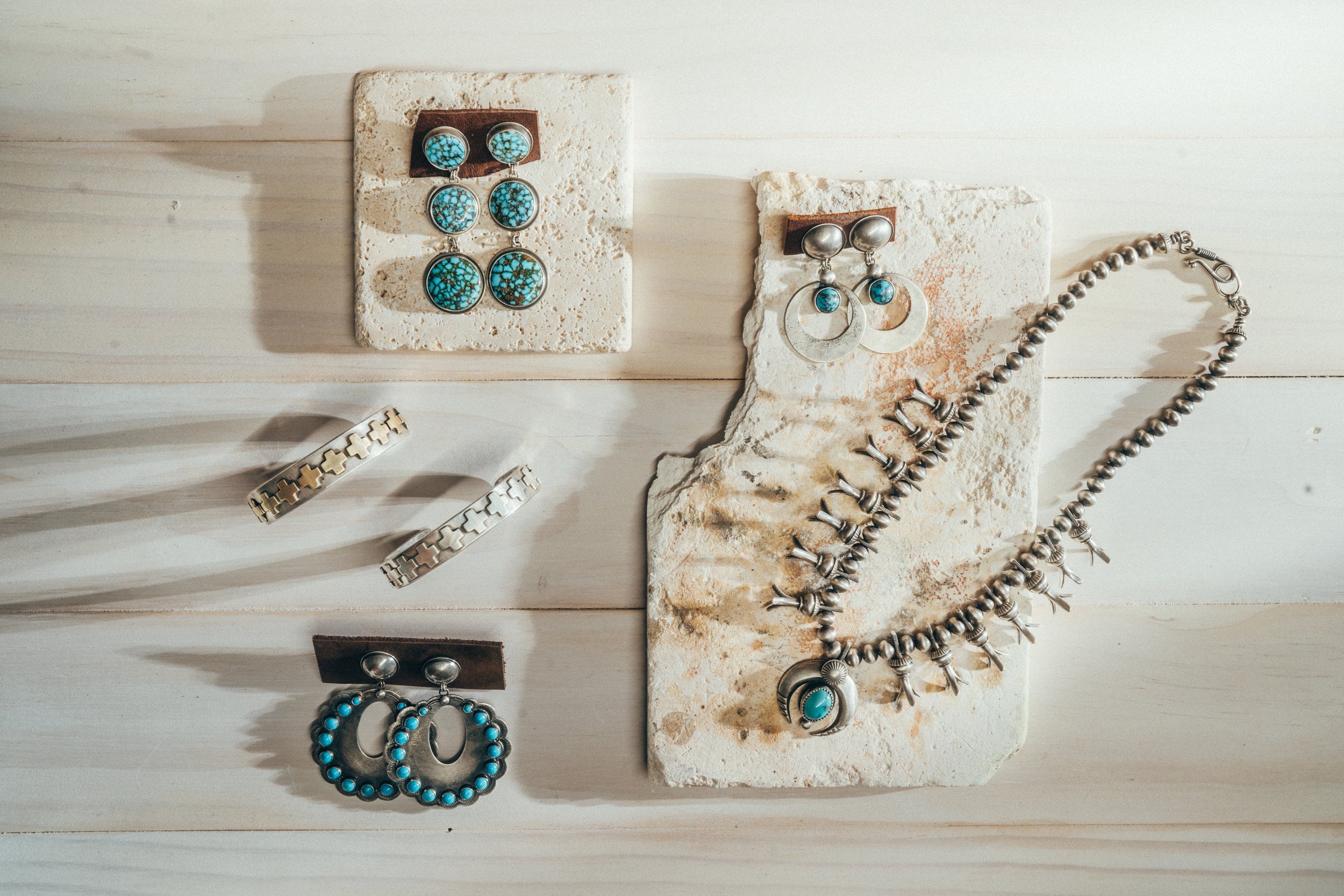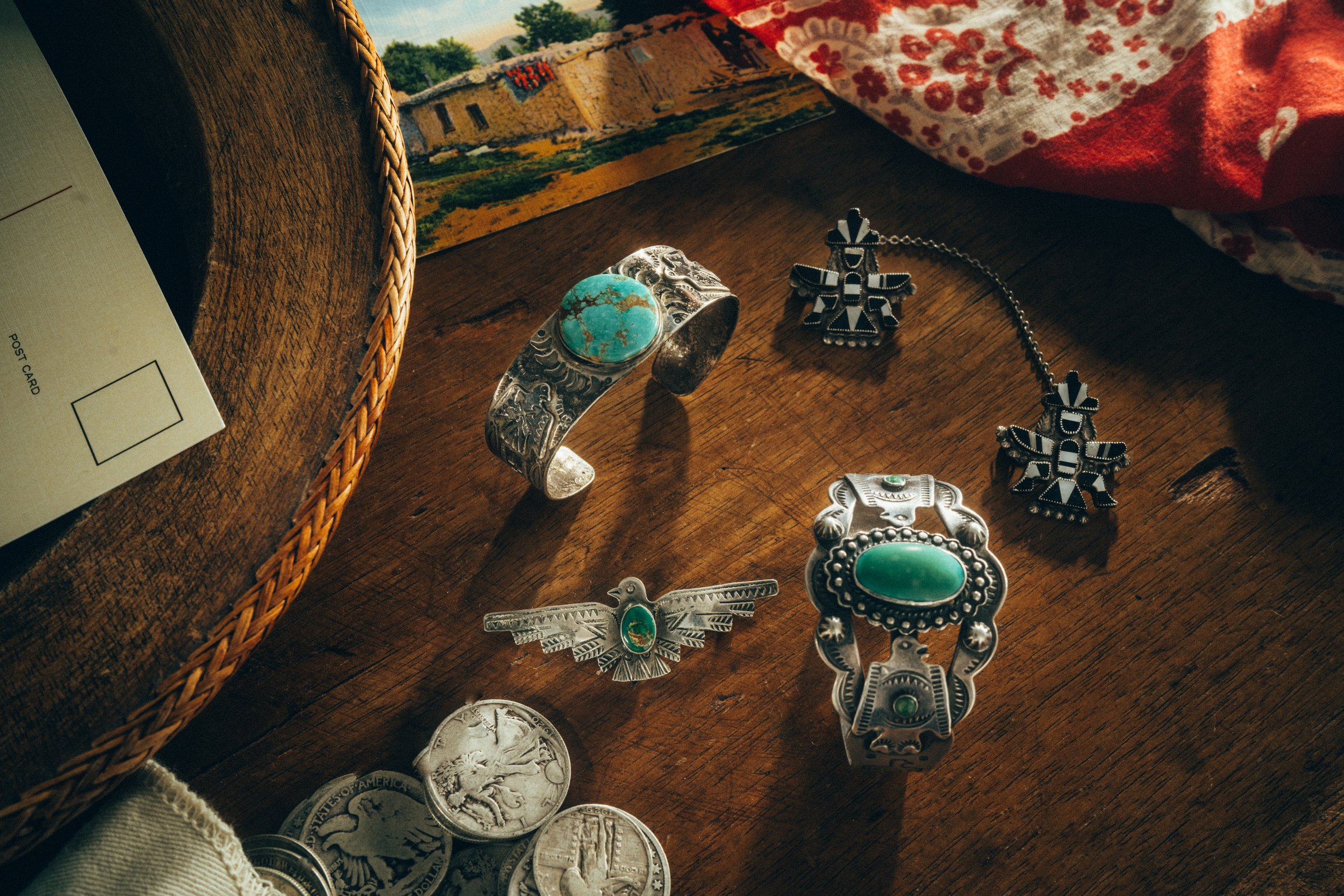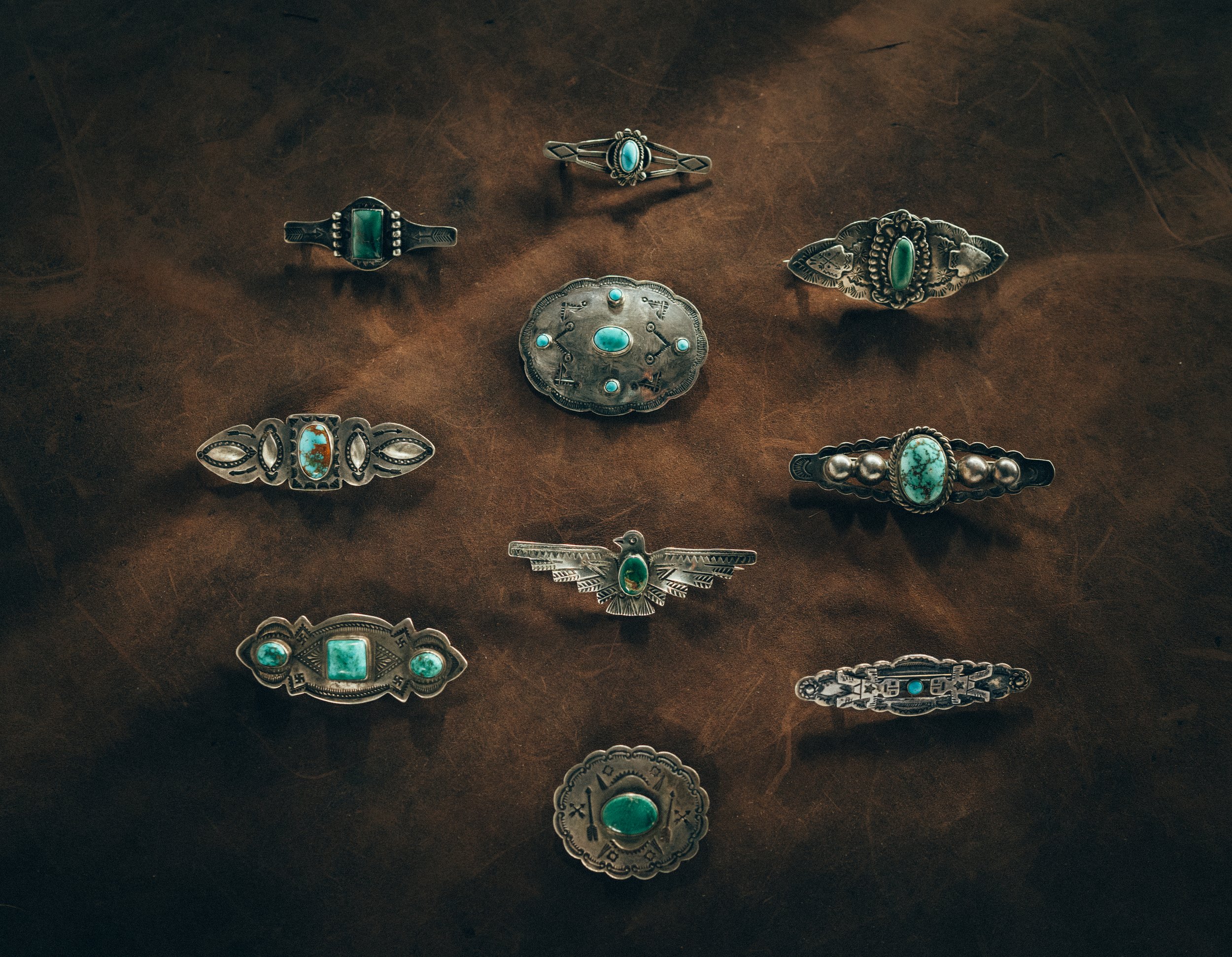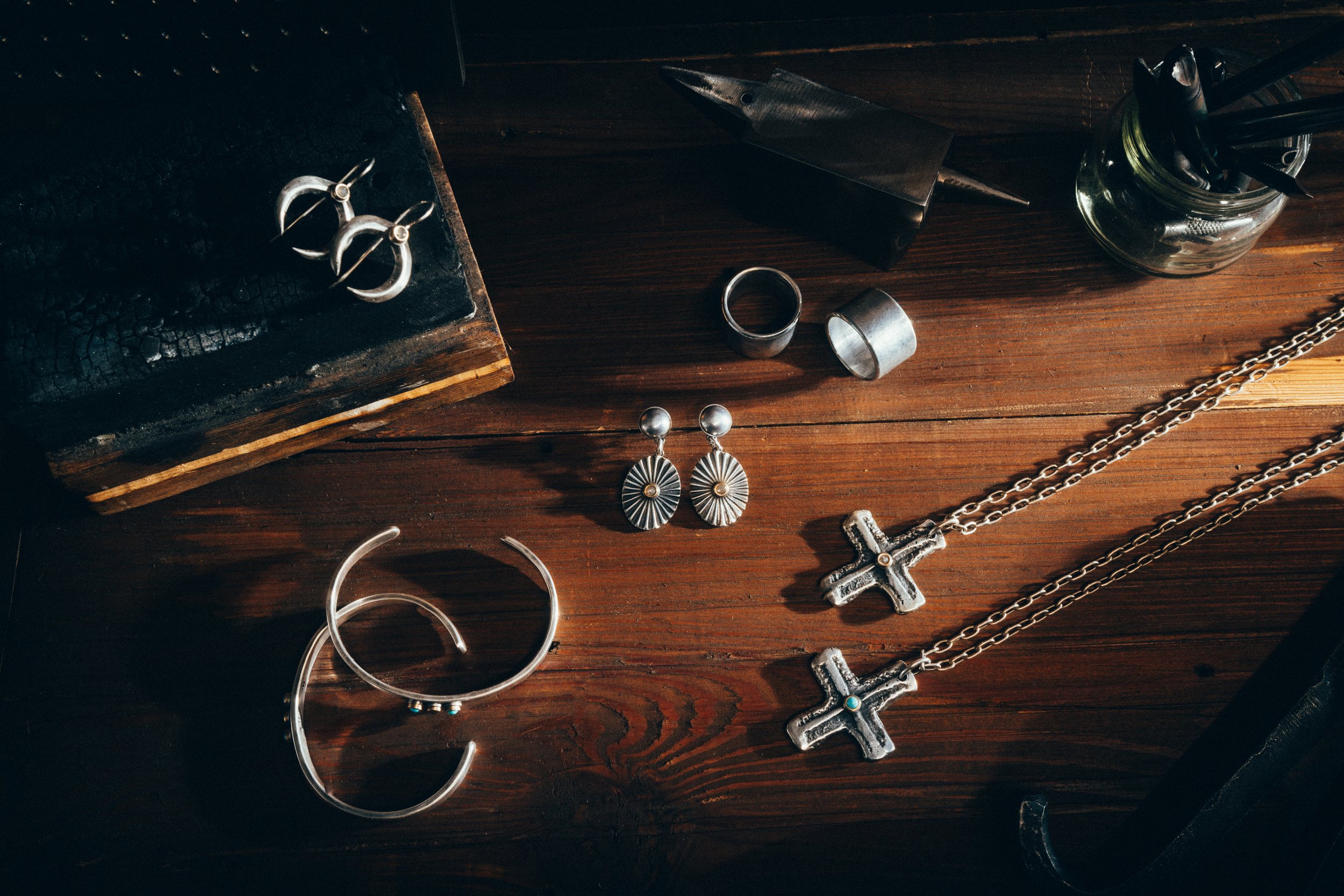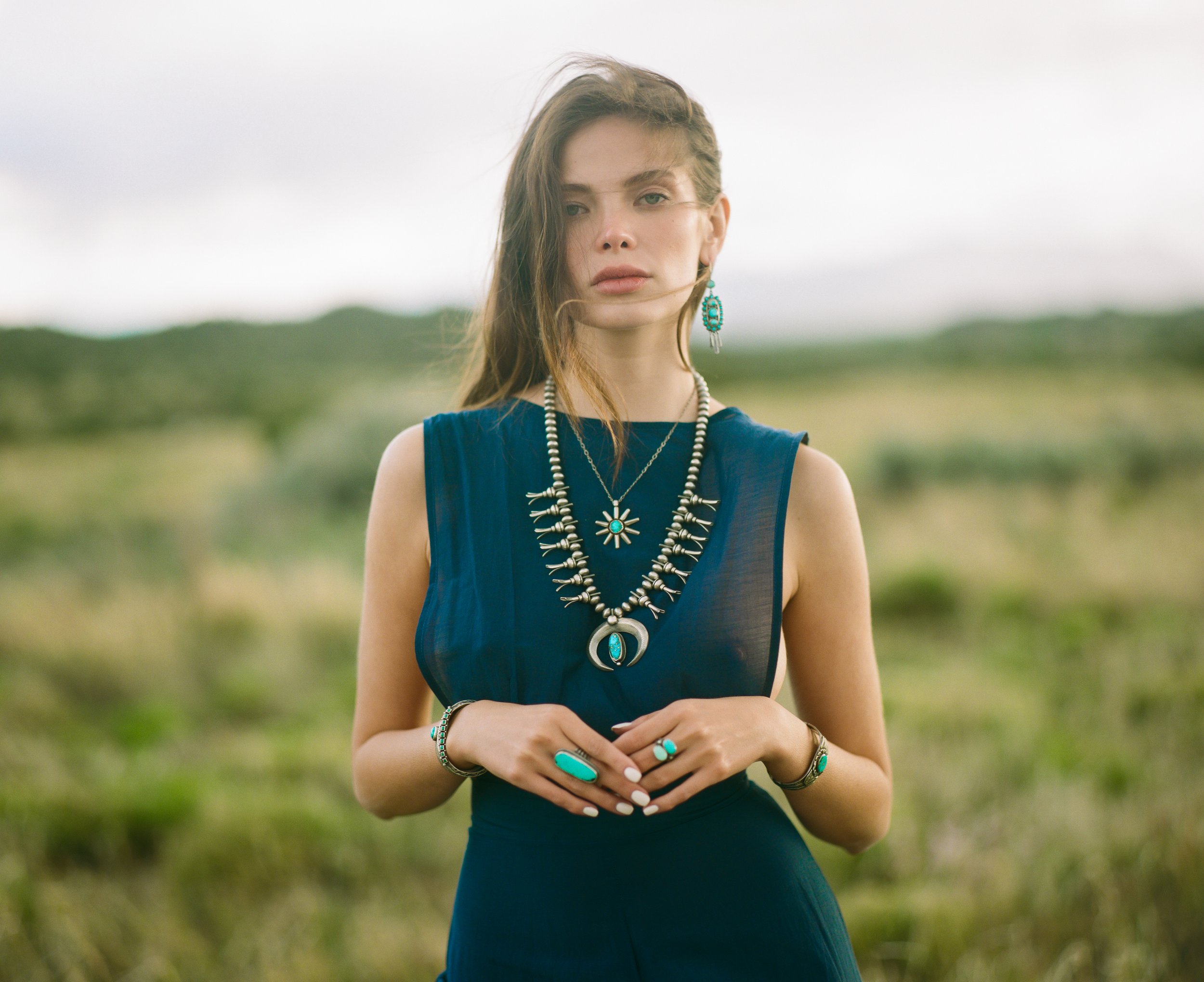
CLOSING IN ON 50 YEARS AS A HERITAGE BUSINESS, PURVEYOR OF ARTISAN, SOUTHWEST-STYLE JEWELRY, PEYOTE BIRD DESIGNS IS OF THE PRECIOUS, AND THE FEW.
Written by Jenn Thornton
In this hyper-fast age, the idea of half a minute of anything, let alone a successful family business, is increasingly rare. That this business quite literally began in the back of a VW bus makes it more so. And yet, so starts the origin story of Santa Fe, New Mexico mainstay Peyote Bird Designs, the beloved brand known for its Native and non-Native artisan jewelry—including some truly immaculate turquoise.
That the business has thrived for nearly five decades has nothing to do with reinventing the wheel and everything to do with staying true to its roots—which, by the way, have the strength of a giant Sequoia. They do it their way; always, without fail. Page one in the Peyote Bird playbook? There is none. Keep it intuitive. “We buy what we love, and we sell what we love,” says Amanda Alexander, president and creative director for the company. “We are always on the hunt for the next exciting thing, the special new turquoise mine, the talented new artist. When it comes to creativity, we don’t follow a rule book. We just give it a try, and if it fails, we learn from that and move on to the next idea.” Truthfully, it rarely fails, but this sense of adventure and experiment is the lifeblood of Peyote Bird. “We will try anything once.”
“We buy what we love, and we sell what we love.”
This attitude comes from the top. Beyond Amanda is Mark Alexander, her father, who founded Peyote Bird with his wife Martha, both of who are still involved with the business, along with their son Jackson, who handles the retail side. As the original ringleader, Mark’s unconventional—but prescient—thinking paved the way. In 1974, fresh off graduation from the University of Denver, Mark and some friends packed up the now famed VW bus and hightailed it to Mexico. Side-tracked by some silver jewelry in Taxco, Mark picked to some pieces to sell to his friends in Denver. On his way back to Colorado, he stopped at the Santo Domingo Pueblo in New Mexico and purchased some heishe beads, as well. Having fallen in love with his haul, Mark set up shop at the student commons; he laid out a blanket to showcase his wares and, in less than a week, was nearly completely sold out of stock and on his way back to Santo Domingo for more. In developing a close relationship with many famous bead rollers on the pueblo, as well as with numerous Navajo and Zuni silversmiths, he began selling jewelry nationwide.
In addition to propping up artisan jewelers and their many techniques, Peyote Bird sources only top quality high-grade semi-precious stones ranging from turquoise, lapis, and opal, to coral. They’re pretty picky about their artisan partners, too. The Alexanders are not transactional types. Many of their partnerships run 20 to 30-plus years and include numerous multi-generational artisan families. They work very closely with members of the Navajo Nation and the Santo Domingo Pueblo and, along with trading in vintage and one-of-a-kind jewelry from Navajo, Zuni, and Pueblo Native Americans, the company carries the Fred Harvey jewelry of the 1930s and ’40 because it “tells the story of the adventurous spirit of the American West, and Peyote Bird continues to embody that spirit to this day,” says Amanda. While Peyote Bird pays homage to worldwide trends, it does not deviate from the quality the brand stands for, and they hoist up a pretty big flag for authenticity, too. “We only work with the real thing,” she adds. “In this age of mass production, nothing is more important than something that is wholly our own.”
“In this age of mass production, nothing is more important than something that is wholly our own.”
For the Alexanders, success is hard work; a passion, for art, for jewelry, for culture.It’s not, however, difficult to understand.“We love what we do,” Amanda says. “We believe in quality over quantity, and in collaboration over competition. We follow our heart. And it has never led us astray.” Except once, to Mexico, and that worked out fabulously.
